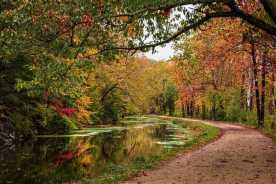AARP Hearing Center
Baseball’s history is also America’s history — a game created in New York City in the 1840s that grew into a beloved national pastime that “has helped us through some of our darkest times,” in the words of documentary filmmaker Ken Burns.
Several museums across the country pay homage to the sport while exploring the ways it has reflected and helped shape the country’s social and cultural identity.
Whether you’re a diehard fan or just someone who enjoys an occasional afternoon at the ol’ ball game, these six spots are worth a visit.


National Baseball Hall Of Fame (Cooperstown, New York)
For more than 80 years, baseball fans have flocked to the charming upstate New York village of Cooperstown to visit the National Baseball Hall of Fame. Spread across three floors, more than 40,000 remarkable artifacts share stories of baseball’s most iconic players and moments. Collection highlights include Hank Aaron’s 714th home run ball; uniforms worn by the women who played in the All-American Girls Professional Baseball League; Andy Warhol’s 1977 pop art portrait of Tom Seaver; and a 1964 proposal for a Bill of Rights for Latino players written by Dominican Felipe Alou. Don’t miss walking through the hallowed corridors of the museum’s first-floor Hall of Fame Gallery, which features bronze plaques honoring the 341 players, managers, umpires and executives who have been enshrined in Cooperstown since 1936.
25 Main St.; 607-547-7200 or 888-425-5633; $28 adults (13-64), $22 adults 65-plus with valid ID, $17 children 7-12, free for children 6 and under, free for active and retired military.







































































